#hålogaland
Text
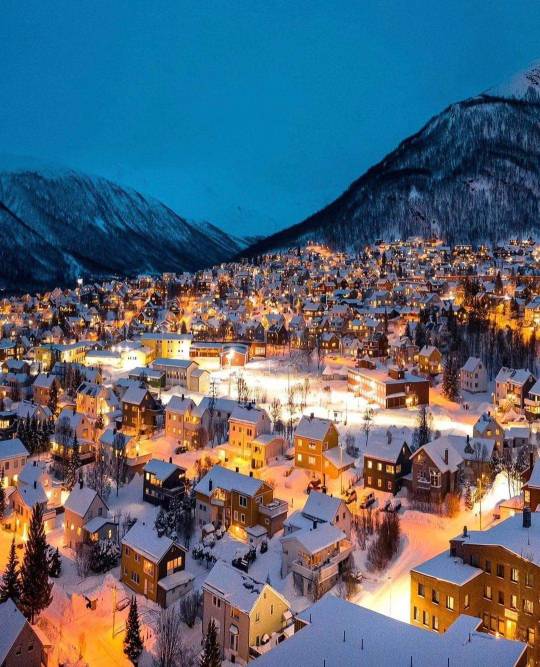
T R O M S Ø
181 notes
·
View notes
Text
Byggingen av Nord-Norges største samferdselsprosjekt er nå offisielt i gang
Første spadetak for OPS-prosjektet E10/rv.85 Tjeldsund–Gullesfjordbotn–Langvassbukt ble onsdag høytidelig markert i Fiskefjord.
Det var storfint besøk som hadde tatt turen til Fiskefjord i Tjeldsund kommune, for å overvære første spadetak på OPS-prosjektet E10/rv.85 Tjeldsund–Gullesfjordbotn–Langvassbukt.
I strålende sommervær fikk de fremmøtte se Samferdselsminister Jon-Ivar Nygård ta plass…

View On WordPress
0 notes
Text
History of Berk
Before the country was unified in 872 AD, Norway was broken into several petty kingdoms. One of these, Hålogaland, lay along the northwestern coast.
At some point, a Viking tribe known as the Hairy Hooligans rebelled against the King of Hålogaland because of raised taxes (legend says it was because he was a cruel and unjust monarch, but it was probably because of taxes.)
They were soundly defeated and their leader killed in battle, but his son managed to persuade the king to not have the survivors executed. Instead he told his tribe that they could be independent if they left the mainland, without a king to rule over them. For this he was named Chief Hiccup Haddock the First.
They sailed forth, and in the year 714 AD came across an island in the middle of nowhere. When they arrived, the island was uninhabited by humans or dragons, since by then the local dragons had come under the sway of the Red Death. This made it seem ideal for settling, compared to the barren or dragon-infested islands they’d encountered elsewhere in the archipelago.
Hiccup I wanted to name the island after his friend and mentor, Bork, who was the first to actually spot it. However, the older man decided that saying he was “Bork from the isle of Bork” sounded stupid, so they changed it to Berk.
Not long after they settled on Berk, the dragons began to raid their flocks. At first the raids were infrequent, but attempts were made to find the nest. When these ended in disaster and nearly wiped out the tribe, Hiccup I forbade more searches for the nest. Instead he suggested they try and find a better home.
In response to this, his brother Hamish killed him and took over the tribe on the grounds that they needed a strong chief, not a ‘hiccup’. He was Hamish I. He married Hiccup I’s widow, Hilda, on the grounds of ‘supporting her in her grief’.
They had a son. Hamish II took after his uncle. Hamish I refused to name his son ‘Hiccup Haddock the Second’ but Hamish II was still nicknamed Hiccup.
Bork, who had particularly bad luck with dragon raids, began to write down what he’d observed about dragons, in the hopes of giving them an edge. As the raids became more frequent, his Book of Dragons became invaluable. He was the mentor of Hamish II, the way Gobber is the mentor of Hiccup III.
The dragon raids continued to worsen, but the tribe refused to leave. Not just because of stubbornness, but because the other nearby inhabitable islands were already taken, and because they didn’t want to go back to the mainland (even if they were un-banished) and live under the rule of distant king again.
At some point, Bork fell into a berserk rage whilst fighting dragons and got killed. Around this time, Hamish II realised that another ‘hiccup’ would be born sooner or later, and set up the hunt for his father’s treasure (as well as the portrait of him as he really looked). He said that he was establishing a legacy for himself and his father, the way Bork’s legacy was the Book of Dragons.
History repeats itself, alas, and Hamish II also knew that his brother was coveting the throne. Rather than wait for his brother to follow in their father’s footsteps and start a coup, he left Berk to find the dragons nest and never returned, allowing his brother to take over. To this day, the portrait of Hamish I and II is succeeded by the portrait of Hamish II’s brother and nephew.
Hamish II had a daughter, Hilda II, who was Valka’s great-grandmother. This is why he knew another ‘Hiccup’ would eventually be born, even if they weren’t named so. Four generations later, his great-great-great-grandson, Hiccup Haddock the Third, was the first Hiccup to become and remain chief of Berk.
10 notes
·
View notes
Photo
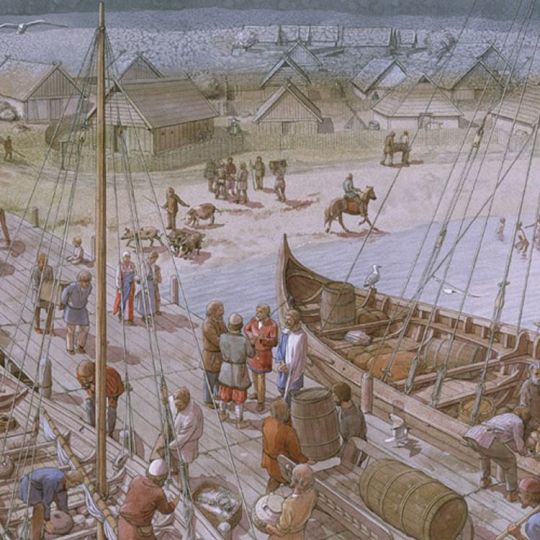
Kaupang
Kaupang était une ville norvégienne de l'âge des Vikings dotée d'un emporium saisonnier, établie vers l'an 780 et abandonnée vers 950. Kaupang était située sur la rive ouest de l'Oslofjord (Viksfjord) dans l'actuel comté de Vestfold, au sud-est de la Norvège, et disposait d'un accès maritime au Skagerrak. Bien qu'elle ait été beaucoup plus petite que d'autres villes vikings de Suède et du Danemark, à savoir Birka et Hedeby, Kaupang avait une importance économique pour les Vikings norvégiens et danois qui menaient des raids et faisaient du commerce avec l'Europe de l'Ouest et les îles britanniques. Kaupang peut donc se targuer d'être la plus ancienne ville de Norvège, et il s'agit probablement du même endroit que "Sciringesheal" ou "Skiringssal" (vieux norrois : Skíringssalr), qui fut visité par le marin et écrivain norvégien Ohthere de Hålogaland au 9e siècle.
Lire la suite...
2 notes
·
View notes
Photo
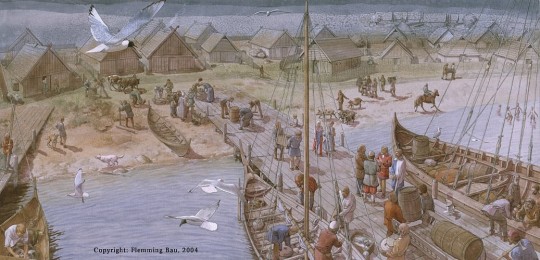
Kaupang
Kaupang fue una ciudad noruega de la edad vikinga con un mercado estacional establecido en torno a 780 d.C. y abandonado en torno a 950 d.C. Kaupang se encuentra en el lado occidental de Fiordo de Oslo (Viksfjord) en lo que hoy en día es el condado suroriental de Vestford, en Noruega, con acceso por mar a Skagerrak. Aunque es mucho más pequeño que otras ciudades vikingas de Suecia o Dinamarca, como por ejemplo Birka o Hedeby, Kaupang era importante económicamente para los vikingos noruegos y daneses que saqueaban y comerciaban con Europa Occidental y las islas británicas. Kaupang puede reclamar ser la ciudad más antigua de Noruega, y es probablemente el mismo lugar que “Sciringesheal” o “Skiringssal” (nórdico antiguo: Skíringssalr), que fue visitado por el navegante y escritor noruego Ohthere de Hålogaland en el siglo IX.
Sigue leyendo...
0 notes
Text
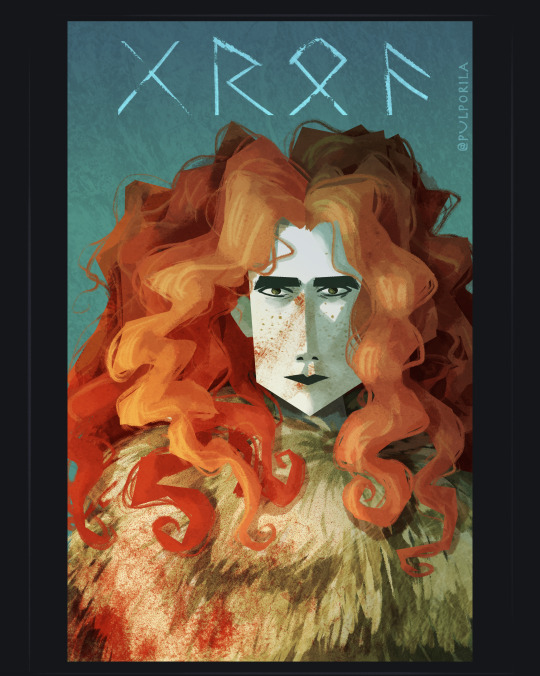

An idea I've been meaning to develop in the shape of a comic ever since I was finding out about old norse culture. She's Gróa, a viking lady from Hålogaland who lost her way home to an esoteric, harsher world.
And since I'm fond of my own culture as well, I've been meaning to include another man to keep each other safe.
#viking#nordic runes#nordic#norse#old norse#scandinavia#art#oc#original character#gróa#norway#redhead#noruega#vikingo#futhark#runes#my art#víkingur#Hålogaland
8 notes
·
View notes
Link
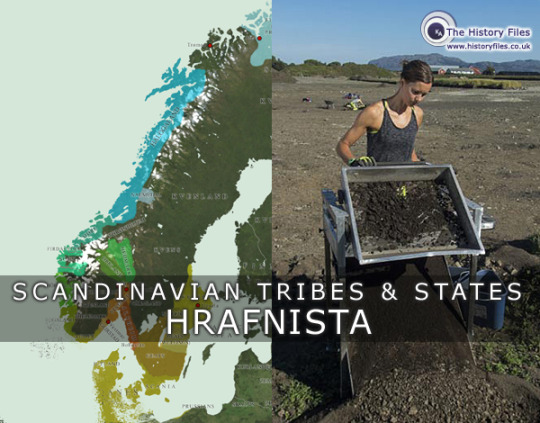
A sub-domain of Hålogaland which was for a time ruled on an independent or semi-independent basis was Hrafnista (Ramsta), a territory on the island of Nærøy in Nord-Trøndelag, northern Norway.
#history#historyfiles#norway#petty kingdoms#norse#vikings#scandinavian#medieval europe#hrafnista#ramsta#nærøy#nordtrøndelag#hålogaland
2 notes
·
View notes
Photo
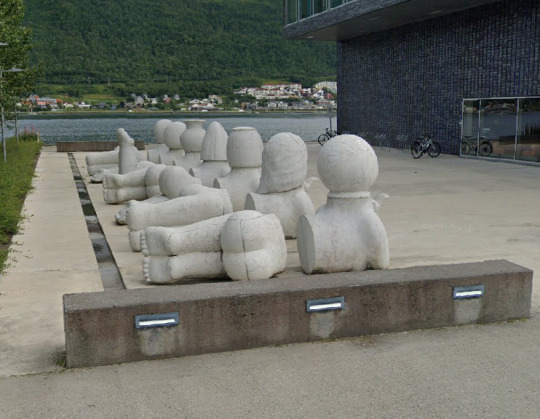
everything belongs to Google
2 notes
·
View notes
Link
#photo#photography#travel#northern lights#northernlights#Sommarøy#Tromsø#Hålogaland#Troms#Nord-Norge#norway#noruega#europe#beautiful
0 notes
Note
I’m sorry but I always think of heligoland bight whenever I see ur url
Germanics is the same
3 notes
·
View notes
Text
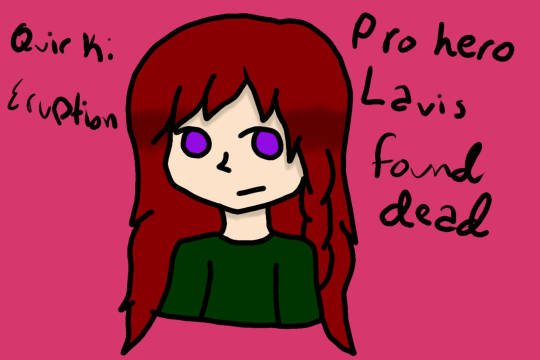
something that happened when Eirik/Human Torch was little
2 notes
·
View notes
Text
Kirkevalget: Dette er kandidatene til Sør-Hålogaland bispedømmeråd
I høst er det kirkevalg, og 35 navn står på til valg av leke medlemmer til Sør-Hålogaland bispedømmeråd. Bispedømmet utgjør Nordland fylke. De som velges blir også medlemmer av Kirkemøtet.
I september er det kirkevalg, og alle medlemmer i Den norske kirke har stemmerett i det soknet de bor, fra det året de fyller 15 år. I kirkevalget velges de som skal styre kirken de neste fire årene, både…

View On WordPress
0 notes
Note
Since we are memeing about geographical etymology can I ask whether the Norse™ had a conception of Scandinavia the peninsula? It seems they don't have a word for it (the closest i can find is Scania which is a borrowed word from the Romans as the name of the southern part and i doubt the Romans knew Scandinavia is a peninsula). Also does Scandinavia have anything to do with Skaldi?
Tumblr fucked up the formatting and rearranged all my text, I think I got it back to something readable but if something looks erratic that's probably why.
All of this is a little unclear, but as far as I know, the running theories go something like this.
The southernmost part of Sweden is called Skåne, which in Old Norse is Skáney. The -ey does indeed mean 'island,' why it would be called that I don't know. Skåne is even more obviously not an island than the rest of the peninsula (though I can't talk shit as someone from New Jersey, from Old Norse Geirsey 'spear-island' though more likely meaning 'island of [a guy named Geir]').
One helpful thing to know is that cognates of ey, previously *awjō, in some places and times, didn't exclusively mean the same thing that we mean when we say "island." The word *awjō is pretty transparently derived from *ahwō, meaning 'water' (in fact, it's the Germanic cognate of Latin aqua). Most etymologists reconstruct a Proto-Germanic meaning something like 'island; wetland,' because in some Germanic languages, it does also mean 'wetland' (though attested Nordic languages aren't among them). If it had that meaning at an earlier time, something that wasn't an island got named that, and then the general meaning of the word narrowed down to 'island,' we end up with a silly and inaccurate name. Supposedly cognates of *awjō do show up meaning 'peninsula' but I'm having trouble confirming.
On whether or not Scandinavians knew that Scandinavia is a peninsula... This might be more knowable than this, but I'm not great at medieval understandings of geography. I believe that at least some of them did. Oththere of Hålogaland probably did, anyway. How widespread this knowledge would have been, I can't say. For most Scandinavians, it probably was as good as an island in a functional sense, since it would be impractical and dangerous to attempt land travel all the way up the peninsula and back down again. Though, the Old Norse word for the Gulf of Bothnia is Helsingjabotn, botn literally meaning 'bottom' but in geographical description meaning the "head" or "source" of something generally, less likely to be applied to a body of water they considered to wrap around back to the rest of the ocean on the other side (though not impossible).
The Romans, however, did consider it an island. Nothing real surprising there. When they learned about it and asked what this place is called they were apparently told that it was Skåney (probably something more like *Skadinawju at the time). According to Wiktionary, Latin Scandinavia alternates with other forms like Scadinavia. This is another thing that one could certainly research further, but I'm not going to because I don't feel like it. They seem to have then either applied that name beyond its boundaries, or this was confused later on, I don't know.
Okay, so now onto the meaning, and to Skaði. I have to do a little grammar here to explain why Skaði the goddess and not some other word like skaði 'damage' is being implicated here.
The Old Norse name Skaði appears with two different declension patterns in Old Norse manuscript, one resembling a feminine īn-stem noun (like elli, old age, also the old woman who wrestles Thor), and one resembling a masculine an-stem, which are very common words like Loki, bogi 'bow', etc etc. The difference is that, no matter the grammatical case, elli is always elli. So to say who Þjazi is, you would say faðir Skaði 'Skaði's father.' A masculine word like Loki does change, it changes to Loka, like Loka senna. So ie resembling a feminine īn-stem noun (like elli, old age, also the old woman who wrestles Thor), and one resembling a masculine an-stem, which are very common words like Loki, bogi 'bow', etc etc. The difference is that, no matter the grammatical case, elli is always elli. So to say who Þjazi is, you would say faðir Skaði 'Skaði's father.' A masculine word like Loki does change, it changes to Loka, like Loka senna. So if you are declining Skaði's name like that, you would call Þjazi faðir Skaða.
īn-stem: *skadī ~ *skadīn-
an-stem: *skada ~ skadan-
Both of these appear in Norse texts, and it's technically impossible to tell which comes earlier, and both have things going for them. In support of the "feminine first" theory, īn-stems are not exceptionally common. That makes it less likely for a word to spontaneously turn into one. It's not that they're super rare, but masculine an-stems are very common. Another thing is that, while it's certainly possible for a person or figure in Norse literature to have a name with grammatical gender that doesn't really line up with their social gender (e.g. Sturla Þorðarson), that is very uncommon.
Against this theory, it's harder to explain why there isn't umlaut: **Skeði (compare ergi from argr -- there actually is a good argument to be made that this doesn't matter, but few if any examples to demonstrate it), and having an īn-stem as a personal name is SUPER uncommon (Elli being, as far as I know, the only one, and that one is only because elli is already a common noun that the figure is a reference to).
As an aside, another name for Skaði may be discernible from an apparent place-name Skeðjuhof. A name like Skeðja would be a much more normal-looking name and if it's real is definitely secondary, derived from trying to level out the problems I just identified with both of the two possibilities for her original name.
Anyway, if indeed it was an īn-stem then yeah, that's probably what we're looking at in the first part of *Skadīn-awjō.
It is admittedly another leap to say that this word in this context definitely meant the actual goddess Skaði, and alternative interpretations are out there, but that's pretty much the only actual attested word we have that might be reconstructed to *skadīn- so it would be irresponsible not to at least consider it.
There isn't a Scandinavian word for Scandinavia (the peninsula) that isn't borrowed from Latin (so yeah, Skáney left Germanic into Latin and then was borrowed back into Germanic but now with the misunderstood meaning from Latin now having a new relevance and usefulness). The normal Old Icelandic word for the region in general is norðrlǫnd 'north-lands' but there really aren't clear boundaries to it. I don't know if an Icelander would meant to include, like, Karelia in that word, and if not, I'm not sure if they meant to include areas populated predominately by Saami in Norway and Sweden. I'm not sure if they felt a need to make that explicit.
So the tl;dr version is: some of them might have had the necessary requirements to know that Scandinavia was shaped somewhat like what it is, but the concept of "Scandinavia" probably wasn't meaningful or relevant enough for them to need to refer to it.
23 notes
·
View notes
Text
early karelian wars

800s - kvens with norwegians against karelian - The Egil's saga places the confrontation of Norwegians and Karelians in the 9th century.
c. 1060–1080 - Lithuanians make campaign against Karelians. - Birchbark manuscript 590 describes Lithuanians making a campaign against Karelians.
1143 - Karelians make campaign against Tavastians - Karelians attack against Tavastians via sea, but escape after losing two ships.
1149 - Karelians support Novgorod against Suzdalians - Karelians make a campaign with Novgorod and Pskovians against Suzdalians.
1187 - Pillage of Sigtuna - Karelians pillage the city on 12 July. The Bishop of Uppsala and the Yarl are killed.
1191 - Novgorod and Karelians campaign against Tavastians - Novgorod and Karelians make a campaign against Tavastians with ships.
1223 - Karelians make expedition to Norway with Novgorod - Karelians make expedition against Norwegian settlements in northern Scandinavia with Novgorod.
1226 - Karelians make another expedition to Norway with Novgorod - Karelians make another expedition against Norwegian settlements in northern Scandinavia with Novgorod.
1241 - Karelians ally with Novgorod against Germans in Koprye - Karelians, Ingrians and men from Staraya Ladoga participate in a campaign led by Alexander Nevsky against Germans in the castle of Koporye.
1253 - Karelians make a raid against Germans - Karelians raid against Germans in the area of Narva.
1257 - Karelians make expedition to Sweden - Karelians make a devastating campaign to Sweden which lead King Valdemar to request Pope Alexander IV to commence a crusade against them.
1260s - Karelians lost self-government to Novgorod
1271 - Karelians and Kvens make campaign to Norway.- Karelians and Kvens attack Hålogaland in Norway.
1278 - Novgorod re-conquer Karelia
1284 - Germans make campaign to Karelia - German warlord Trunda makes campaign by boats and ships to Karelia via river Neva. His goal was the taxation of Karelians. Trunda and his men are defeated at the mouth of the river by Novgorodians with the men of Staraya Ladoga on the 9th of September.
1293 - Third Swedish crusade - Third Swedish crusade to Finland against Karelians. Viborg Castle was established in 1293 on the site of destroyed Karelian fort as the easternmost outpost of the medieval Kingdom of Sweden.
1323 -Treaty of Nöteborg - The Treaty of Nöteborg is signed 12 August. It divides Karelia between kingdom of Sweden and Novgorod Republic.
1337 - The Revolt of Käkisalmi - Karelians revolt with help of Viborg's swedish forces against Novgorod in Käkisalmi due to heavy taxation by Lithuanian Narimantas whom Novgorod had assigned to rule Karelia.
-------
Historia Norwegiae was written sometime between 1160 and 1175 CE in an unknown location. It contains a list of peoples in the North:
"But towards north many pagan tribes—alas!—stretch from the east behind Norway, namely Karelians (Kiriali) and Kvens (Kwæni), corneous Sami people (cornuti Finni) and both peoples of Bjarmia (utrique Biarmones). But what tribes dwell behind them, have we no certainty."
13 notes
·
View notes
Photo
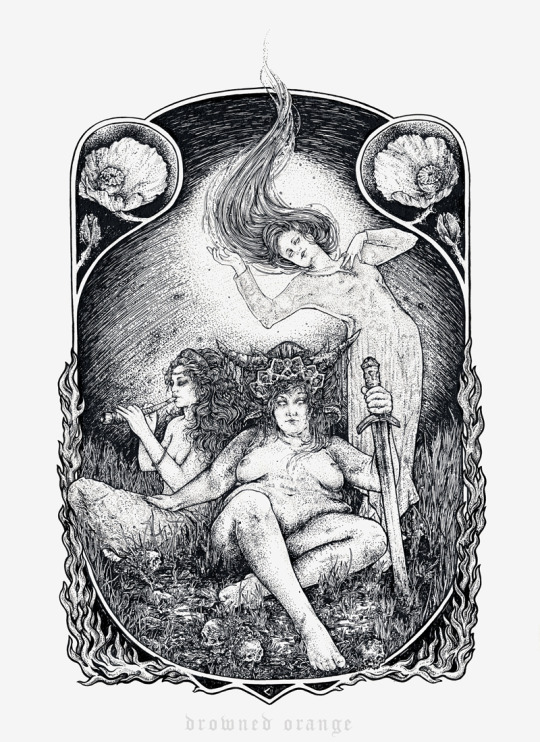
• Glöð •
Glöð Grimsdatter, Queen of Hålogaland, appears in the Norse Þorsteins saga Víkingssonar.
Glöð ("glad" or "glowing embers"; Glod or Glut ) is a daughter of Grímr of Grímsgarðr in Jötunheimr and his wife Alvör, the sister of King Álf the Old of Álfheimr. She is the wife of Logi (not to confuse with Loki) with whom she had two daughters, Eysa or Eisa ("glowing embers") and Eimyrja ("embers").
🌿
This piece inspired by described Glöð was originally done for the Group Exhibition 'From Ash to Flame' at Los Globos, LA 2018. Nib and Ink on Watercolourpaper; original art is sold.
Highres file is available for licencing, feel free to send me an email: [email protected]
#norse#mythology#artforsale#darkart#blackmetal#sword#skull#skulls#fire#darkartist#drownedorange#drowned#orange
19 notes
·
View notes